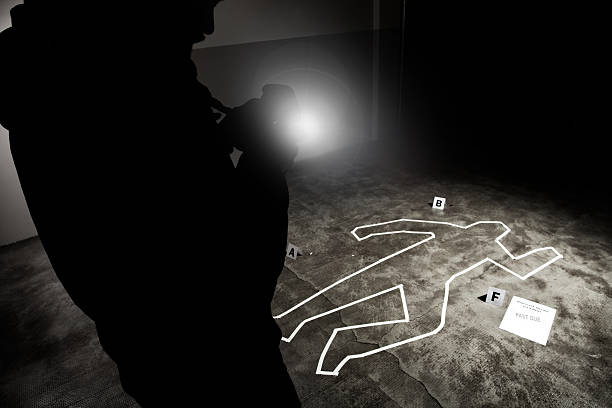When To Use Deadly Force In Self-Defense


Using force in self-defense is a complex and sensitive matter that hinges on the fundamental right to protect oneself from harm. While the concept of self-defense is universally recognized, the specific circumstances under which force is deemed justifiable vary across legal systems. Understanding when to use force in self-defense involves a nuanced exploration of imminent threats, the principle of proportionality, and the necessity to ensure personal safety within the bounds of the law. In this article, we will take a high-level look at deadly force self-defense laws. What are the principles that are generally required to be present for a case to be found self-defense and when to apply deadly force?
What is self-defense
Self-defense is the use of reasonable force to protect oneself or others from harm in a situation where there is an imminent threat of physical violence. It’s often a legal right, but the degree of force allowed can vary depending on the jurisdiction.
Law of self-defense
It is important to understand that the law of self-defense is about using force to meet force. It is not about taking life. It is about protecting life. It is not about starting a fight. It’s about surviving a fight. It is fundamentally about securing the individual’s natural right to exist. While the specific wording of the law will vary somewhat from state to state, there are some general principles that we can study that are common everywhere. Generally, someone can use deadly force in self-defense when they are confronted with a deadly threat. An individual can also use deadly force to protect someone else if they are facing the same deadly threat. To judge whether the situation has risen to a level of becoming a deadly threat, there are generally 4 things that we look at; Ability, Opportunity, Action, and Standing
Ability
Is someone’s physical ability to act out an attack. If they are securely handcuffed behind their back and shackled to the wall, the odds of them being able to be a deadly threat are slim to none because they cannot engage with you to create that deadly force.
Opportunity
Opportunity speaks of the circumstance of the incident. For example, If someone has the ability because they are armed with a knife but they are 150 yards away, they may become a deadly threat later. But they are not a deadly threat right now since they lack the opportunity to harm you at the moment.
Action
This is when the attacker becomes a threat because of their action. This action could be a deadly verbal threat or perhaps a physical movement such as lunging towards you from a close range with a knife
Standing
Standing is a legal term that has a broad but important meaning. Everything up until now has dealt with the attacker, but not you. Standing looks at what you have been doing up until the moment that you acted in self-defense. Did you start the fight? If the attacker tried to escape, did you chase him or let him go? If you are in a state that has to retreat, did you legally comply with that duty by exhausting your retreat options before using deadly force? If you broke the law or acted unreasonably, then you may have ruined your standing or your ability to claim self-defense. After all, self-defense is not about starting fights or chasing people. It is only about saving lives by stopping the threat. Without each of these four factors, ability, opportunity, action, and standing, you probably do not have a perfect self-defense case.
If you use deadly force without each of the four factors of ability, opportunity, action, and standing, then you might be going to prison for a long time. This also means that in nearly every state, we cannot use deadly force to protect property. It is people’s defense, not self-defense. For instance, If someone makes a threat to my empty car parked in my driveway, they pull out a hammer and start hitting it while I’m safely watching from the second floor of my home. That may be awful, maybe a crime, but it’s not a deadly threat to me or anyone else at least at that moment. If you use deadly force to stop the person from damaging your property, you will probably be charged with a serious felony and go to prison.
Deadly Force And Non Deadly Force
Before you can understand self-defense law, it is important to understand the difference between deadly force and non-deadly force. After all, you need to be able to recognize what is deadly force to know when you can use deadly force and when you cannot.
Deadly force is the force that is intended or likely to cause death or great bodily harm. Great bodily harm definitions do vary from state to state, but speaking loosely, great bodily harm is referring to when someone suffers a major crippling injury, such as a loss of a limb or organ, whether permanently or just for a good length of time.
Some simple examples of deadly force would include shooting at someone regardless of whether you actually hit them or even if you intended to hit them. Another easy example is stabbing someone with a knife, regardless of whether or not you hit them in the chest or the arm. Deadly force can also be assaulting someone to their face or head. Remember it does not take a ton of force to seriously injure or kill someone when striking them in the head, whether with an object, or even your fists alone.
Non-deadly force is all the force that fails to rise to the level of deadly force. In other words, non-deadly force is the use of force that stops short of becoming a deadly force. This leaves a lot of room for a Gray area about what can be classified as either deadly force or non-deadly force. Let’s take a look at this and explore some of these issues in some scenarios:
Example 1
Let’s take an example of a punch to the face. A simple punch to the face may not be considered a deadly force under most circumstances. I think we can all agree on that. However, the context can completely fuel a change in a judge or jury’s opinion. Let’s take a large, healthy, and particularly strong man who was about to punch as hard as he could a 100-year-old person with a long list of health issues. This would rightly be called deadly force by most people. Why? Because it is foreseeable that this could produce death or great bodily harm. If we reverse Who’s throwing that punch? So now the older person is punching the powerful young man. Is that deadly force? It almost certainly would not be deadly force, since it is unlikely that this action would cause death or great bodily harm.
If we reflect on our four factors, the older citizen would lack the ability to produce deadly force with a punch. As a result, the young man would critically lack one of the four factors and therefore could not use deadly force and self-defense. We can see that in this situation, despite everyone being unarmed, there is a disparity of force factor that demands a closer examination of the facts involved beyond, well, someone is punching someone and that’s never deadly force, or that’s always deadly force. We need to examine the context or as we call it in the law, the totality of the circumstances to arrive at the best possible understanding of whether someone was justified when they use deadly force.
Examples 2
Let’s look at something more realistic than scenario one. you’re back in the parking lot, getting your groceries from the store to your car. You are alone, and it is dark out except for some lighting from the overhead parking lot lights. It’s maybe 8:30 PM during the winter in the upper Midwest, a man is standing next to your car, which is the last car in the parking lot furthest from the store, wearing a ski mask and holding what appears to be a box cutter with the blade out.
Due to some line of sight issues in other cars, you don’t notice or see him until you pass a large SUV parked right next to your car with blacked-out windows, and suddenly he’s standing on the other side of your cart about 5 or so feet away behind the trunk of your car. You stop and look at each other for a moment, then without anyone saying anything, you draw and fire your gun once and he turns and runs about 30 feet before collapsing from his fatal wound.
Security video footage shows the encounter in surprisingly high resolution and perhaps even more surprisingly with a sound prosecutor at trial, could argue that the individual, while armed with a box cutter and therefore having the ability and at very close range therefore possessing the opportunity, never took the action to show their intent and therefore your door for using deadly force in self-defense, never actually opened.
Now never mind the fact that he’s a person with felony conviction and was just released from bail for robbing someone with a box cutter about two weeks ago. Also, the prosecutor points out it was about 5° below freezing outside, so the ski mask was appropriate and shouldn’t be considered as something unusual in the circumstances. In more technical language, they would be arguing that you were not in the required reasonable fear of imminent death or great bodily harm to use deadly force, because without the action from the man who’s now dead, your action was either unreasonable or the threat was not imminent, or both.
Fundamentally, these are action issues. The prosecutor may also argue that while the state that we’re imagining here does not have a duty to retreat law, your ability to retreat or run is part of how a jury can interpret how reasonable or unreasonable your use of deadly force was. Your defense attorney may argue that the combination of the ski mask to hide their face, the box cutter in hand for no particular reason, with the blade extended as well, and the man standing next to your vehicle for no particular reason furthest out from the parking lot spelled out loud and clear the action and their intent that you correctly read when you immediately swung into action.
Also, none of the cars in the parking lot were his, but of course, you didn’t know that at the time when you pulled the trigger, along with their criminal record and being out on bail for virtually the identical crime. Your defense attorney may also point out that there is no duty to retreat in your state and that if you had tried to run, well, that parking lot may have put you more in harm’s way because of all the icy conditions where they saw you stumble, actually going out to your car.
So how do we decode this? As we noted, this case has two to four boxes checked, ability and opportunity. The standing issue is not perfect, but it’s not really what we’re going to be worried about most here. Mainly we are just talking about action. Was this person an imminent or immediate threat? If they were then that also addresses why you could not try to flee across the icy parking lot and arguably addresses some of the standing all at the same time.
Conclusion
Generally speaking, you may want to wait to have someone issue some kind of verbal threat, a lunge, or make some sort of movement to show that the man in the ski mask had bad intent. Without any of these, the argument comes down to whether the jury will believe that his mere presence where he was without seeming any legitimate purpose, how he was dressed, the open box cutter that he was carrying, and if they’re allowed to hear it at trial. The man’s criminal record may play a factor to build in the case for that action element. Again, keep in mind that the law and the specifics of the law change with both place and time, but these overarching 4 pillars remain in place; Ability, opportunity, action, and standing. Learn them and apply them to fact patterns whenever you hear them.




